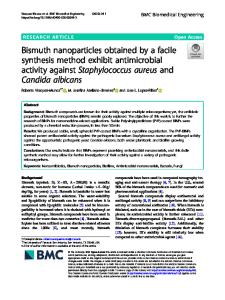Pb(core)/ZnO(shell) nanowires obtained by microwave-assisted method
- PDF / 1,029,684 Bytes
- 7 Pages / 595.28 x 793.7 pts Page_size
- 116 Downloads / 320 Views
NANO EXPRESS
Open Access
Pb(core)/ZnO(shell) nanowires obtained by microwave-assisted method F Solis-Pomar1,2, MF Meléndrez3, R Esparza4 and E Pérez-Tijerina1,2*
Abstract In this study, Pb-filled ZnO nanowires [Pb(core)/ZnO(shell)] were synthesized by a simple and novel one-step vapor transport and condensation method by microwave-assisted decomposition of zinc ferrite. The synthesis was performed using a conventional oven at 1000 W and 5 min of treatment. After synthesis, a spongy white cottonlike material was obtained in the condensation zone of the reaction system. HRTEM analysis revealed that product consists of a Pb-(core) with (fcc) cubic structure that preferentially grows in the [111] direction and a hexagonal wurtzite ZnO-(Shell) that grows in the [001] direction. Nanowire length was more than 5 μm and a statistical analysis determined that the shell and core diameters were 21.00 ± 3.00 and 4.00 ± 1.00 nm, respectively. Experimental, structural details, and synthesis mechanism are discussed in this study. Introduction One-dimensional (1D) nanostructures as wires, rods, belts, and tubes have attracted the attention of researchers because of their intrinsic properties and novel applications in various fields [1]. There are several nanostructured materials that are nowadays being widely used, these are based on those of zinc oxide which has excellent properties such as a wide energy band gap (3.37 eV) [2], a large exciton binding energy (60 meV) at room temperature [3], high optical gain (300 cm-1) [4], high mechanical and thermal stabilities [5], and radiation hardness [6]. Because of these properties, ZnO nanostructures have been applied as activated material in the electronic devices manufacture, e.g., gas sensors, nanoresonators, solar cells, waveguide, field emitters, nanocantilevers, nanolasers, transistors, and optoelectronic devices [7-14]. Furthermore, this material is very versatile to obtain several kinds of nanostructures, such as wires, rods, particles, belts, plates, tubes, and flowers, that have been synthesized through various methods. Among these are the chemical and physical methods, whose choice often depends on the type of application being sought. A recent interest in scientific research is the application of nanostructures as superconducting nanowires with diameters comparable to the * Correspondence: [email protected] 1 Laboratorio de Nanociencias y Nanotecnología CICFiM (FCFM), Universidad Autónoma de Nuevo León, Monterrey, Nuevo León 66450, México Full list of author information is available at the end of the article
superconducting coherence length that has served as a model system to study thermal and quantum phase slips [15]. In addition, these kinds of materials have a relatively high critical temperatures and stability at ambient atmosphere make them potential candidates for applications in other superconducting devices, for example, single photon detectors [16] and hot-electron bolometric mixers [17]. A nanostructured system with the application mentioned may be a
Data Loading...







